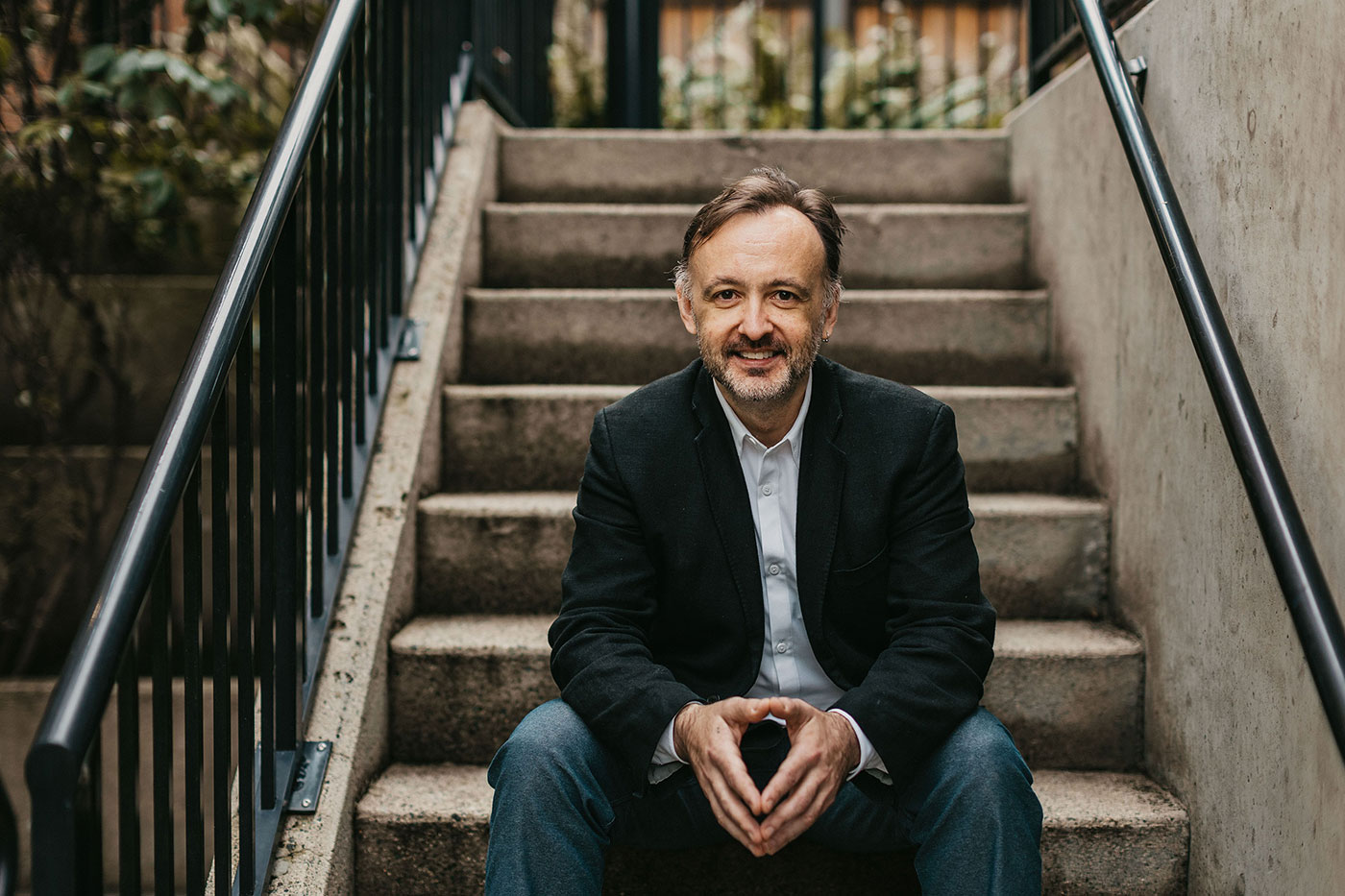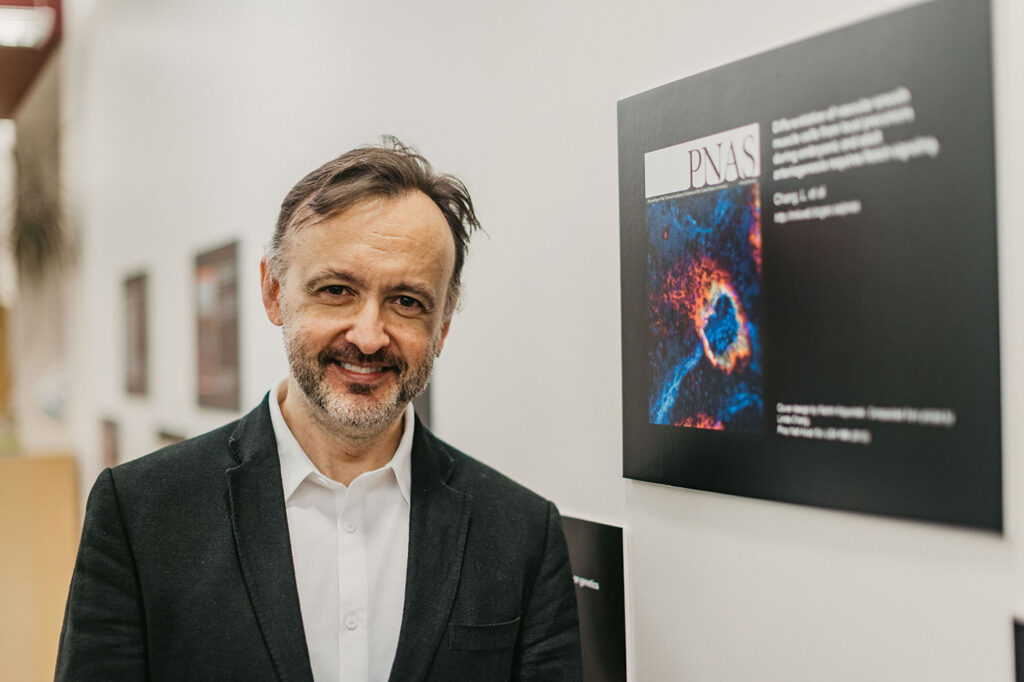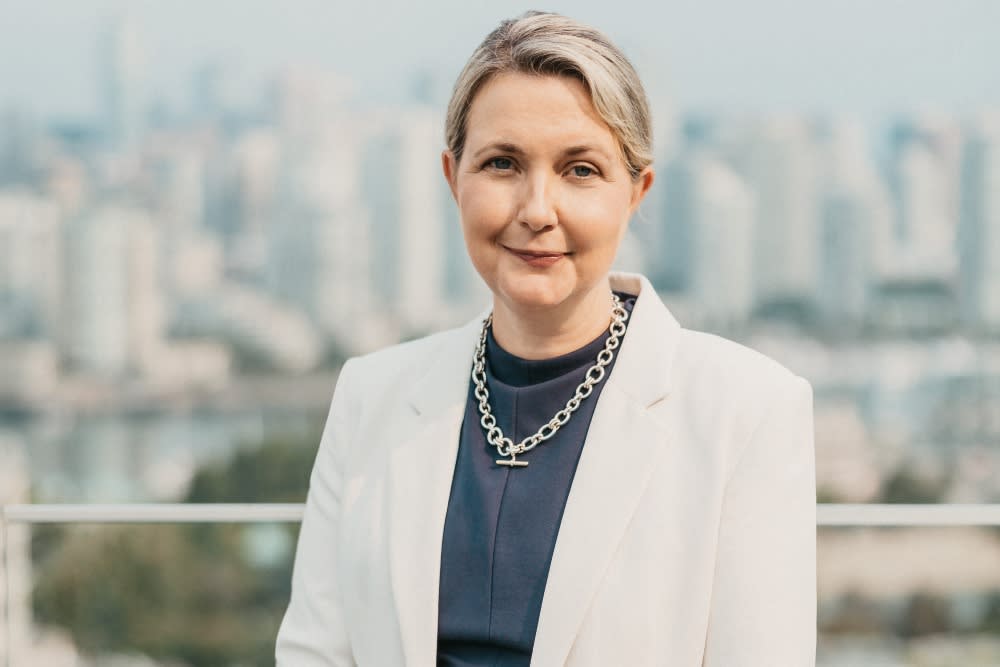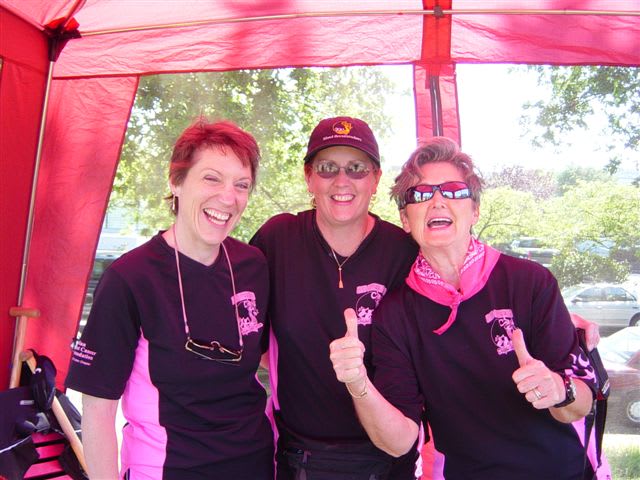This is Personal – Martin Krzywinski
February 24, 2022
Found in Community, General, Genome Sciences Centre
Martin Krzywinski, artist, musician, Polish-Canadian, scientist at BC Cancer, shares how his work as a data visualist sparks the imagination and helps people better understand the scientific process to solve problems, as part of our This is Personal blog series.

I would love it if a cure for cancer put me out of a job tomorrow. To shutter all of the BC Cancer centres — that would be amazing. Until then, the work my colleagues and I do at Canada’s Michael Smith Genome Sciences Centre at BC Cancer is very much needed in the ongoing fight against a disease that has affected so many.
I’ve worked here for 20 years. But how I got to where I am now — a staff scientist and a visual artist — was actually through a series of unplanned turns. Originally, I was hired to build the computer network and be the main systems administrator. Back then, it was just a handful of us sitting in the corner of a lab. The human genome wasn’t fully sequenced yet and high-throughput sequencing wasn’t even on the horizon.
I have a background in biochemistry with another degree in math and physics, and so people tend to do a double take when I tell them I’m also an artist. The convergence of science and art began for me when I found myself having difficulty understanding, and being unsatisfied with, the visual representations of the complex concepts in molecular biology. I started exploring ways to refine these graphics and realized that the combination of my analytical and artistic sides helped not only me in navigating this exploration but, importantly, helped others see things better, and ultimately solved problems.
I love that I get to represent BC Cancer on the world stage by creating the covers for scientific journals that feature some of our groundbreaking research. Our findings, and my information graphics, have graced the pages of Science and Nature, as well as Wired, The New York Times, and American Scientist.
Even more flattering, and an honour, is that the visuals I create resonate with people in ways I could never have imagined. I’ve received messages from people who have put them up on their walls, on birthday cakes or even — amazingly — on their bodies. More than one person has had tattoos made from my graphics. That’s a tremendous dedication to my work, and that of BC Cancer’s, and I applaud them for it. Especially since permanently putting my work on my body isn’t something I’ve even done … yet.
“Cancer is a scary word. But one thing we’ve learned is that cancer is not one word or one thing. The disease has many faces and many effective treatments exist. In many cases we have gained extremely specific understanding of the underlying biological processes — we gain ground each day. Yet, much of it still remains a mystery.”
Some of the fear around cancer stems from the fact that a lot of the information out there is very technical and hasn’t been unpacked completely by the non-scientific population impacted by it. To really understand it, you have to grasp the foundations of molecular biology and that’s not something people have general knowledge of. That’s where my work as an information graphics and data visual artist comes in.
I wouldn’t say my job is to make cancer pretty. It’s more about creating visuals that spark the imagination and help people understand the scientific process to solve the problems — diseases and viruses — that exist. There is great beauty in a good explanation.
My stepfather died of cancer, but I don’t need to have lost a loved one to cancer for it to be personal and to empathize with those who are struggling. And the best way for me to show compassion — as a scientist, an artist and a human being — is by helping people to better understand it. Which, hopefully, also gets us one step closer to ending it.

Martin stands beside one of his data visualizations
To say that cancer is complicated is a vast understatement. It’s something I think about a lot as someone whose job it is to create artistic and analytical explanations about the biology of cancer. And not just scientifically, but philosophically and existentially as well.
When people think about disease, they imagine something attacking them from outside. But cancer comes from inside you as a natural byproduct of the photocopy process your cells undertake to divide. Sometimes things go wrong and cells photocopy themselves into more numbers and new roles than they should.
Simply put, cancer is actually a part of you that’s harming you. And the goal for treatment is to eradicate that part of you, without negatively impacting the rest of you. It’s a complicated balancing act.
Thankfully, science is a remarkable process. It’s a flashlight that lets us see things that make noises in the dark. Some of this darkness needs the most powerful flashlights, and we as researchers and scientists can go through batteries very quickly. Donors, who give so generously to fuel our work at BC Cancer, help us maintain a steady supply of batteries. So that our flashlights will hopefully never go out.
I’m fully dedicated to contribute to shining a light on new knowledge and insights to change cancer outcomes — and take some of the fear out of this disease that affects so many of us.


